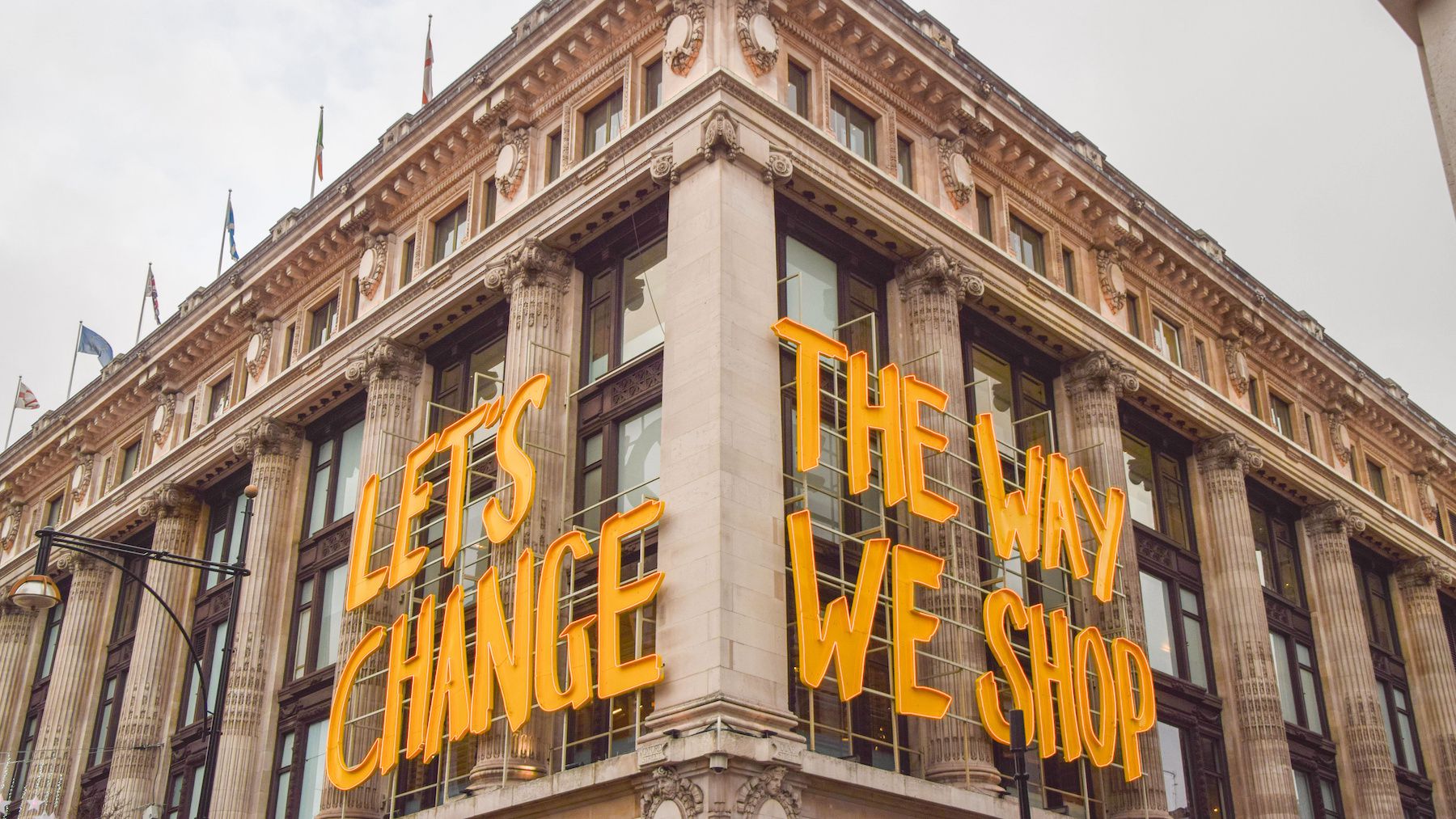
Three times a year, the chief executives of some of fashion’s most powerful companies gather to discuss a shared, and increasingly urgent, challenge: how to cut down the pollution the industry spews into the world’s air, oceans and soil.
The regular high-level gatherings are the work of the Fashion Pact, a voluntary CEO-powered initiative launched around the G7 in 2019 at the urging of French President Emmanuel Macron. Its members are said to represent the decision-making power of roughly a third of the industry by volume and include luxury giants Kering, Chanel and Prada, sportswear titans Nike and Adidas and fast fashion behemoths H&M Group and Inditex.
That political and executive clout was meant to separate the Fashion Pact from myriad other splashy, but ultimately low-impact, corporate commitments.
Four years in, its track record is murky.
High-profile signatories including Hermès, Selfridges and Stella McCartney have quietly left, and action has largely been limited to a handful of pilot projects and scoping programmes.
Selfridges and Stella McCartney confirmed they had left the organisation. Hermès did not respond to requests for comment.
Fluctuations in membership are normal for industry initiatives, Fashion Pact executive director and secretary general Eva von Alvensleben said in an emailed statement. Typically companies may leave a programme for a variety of reasons, including cost, team capacity or differing priorities and pace of action. The Fashion Pact has also eliminated one member for a lack of engagement this year, von Alvensleben said. Meanwhile, new members, including Asics, Chloe and J. Crew Group, continue to join.
Long-Term Focus, Near-Term Pressure
Members of the initiative’s leadership said it’d spent the last three years laying the groundwork for swifter action. The group is focused on long-term projects that require buy-in from multiple stakeholders and will take time to show impact on the ground, they said. And though it’s been shy about trumpeting updates while still setting its foundations, it’s tracking members’ efforts internally.
“If you look at what it takes, in reality, to get people on the same page, educate people, develop these plans, align around that. I think, in all fairness, that the industry can be pleased,” said Fashion Pact co-chair Paul Polman.
Exactly how the group is performing against core goals to reduce emissions, plastic packaging and the impact of raw materials is difficult to track. Members are meant to report their progress annually but do so selectively, and in some cases, not at all. Many have yet to meet the basics of the Fashion Pact commitment. For instance, signatories are meant to set verified, science-based targets to cut their emissions, but nearly 40 percent have not officially committed to do so.
Increasing this proportion is a priority for the Fashion Pact, and many members are working on the process, von Alvensleben said in an emailed statement, adding that the initiative is designed to accommodate companies at different stages of their sustainability journey.
The Fashion Pact counts among its achievements increased focus on fashion’s impact on nature, still an emerging topic when the organisation made biodiversity one of three core environmental issues in its 2020 action plan. More than 40 percent of members have now set one or more biodiversity-related targets with the support of tools and research developed by the initiative. The number with specific biodiversity strategies in place has grown from 10 percent to 21 percent in the last two years, it said.
How this increased engagement actually translates into action to reduce impact and advance the group’s collective goal to support zero deforestation by 2025 remains to be seen.
In December, members kicked off a programme to collectively finance renewable energy projects in Europe in exchange for clean power credits. The project represents the most advanced example so far of the kind of industry-level action the Fashion Pact was designed to unlock, bringing together competitors to negotiate complicated, long-term transactions. It aims to add 100,000 megawatts a year of new renewable electricity generation to the grid, a scale that wouldn’t have been possible for most companies to negotiate on their own, said Polman. The initial project includes 12 companies, but is intended as a test case for further action.
“We know that we haven’t moved up in the industry as fast as we should, but there are definitely several companies that have shown progress in different ways,” said H&M Group CEO and in-coming Fashion Pact co-chair Helena Helmersson.
The group is better positioned to accelerate its efforts because of the work of the last few years, while an incoming wave of sustainability regulations is helping to generate more momentum, she added. “The fact the regulations are coming, it’s putting a whole different sense of urgency … The approach from CEOs and our organisation is really to get to action quickly.”
Time is running short. At this point, global temperatures are “more likely than not” to breach 1.5C above pre-industrial levels within the next five years, the globally agreed threshold beyond which it will become difficult to avoid the worst effects of global warming, according to research from the World Meteorological Organisation published last week.
The fashion industry is already feeling the fallout from extreme weather in raw material supply chains and consumer shopping habits. Meanwhile, a wide-ranging greenwashing crackdown over the last 18 months has ratcheted up criticism of splashy, but voluntary, corporate climate commitments and amped up the pressure on companies to deliver real results.
Beyond Pilot Programmes
As Helmersson takes over from outgoing co-chair Kering CEO François-Henri Pinault, the Fashion Pact has its work cut out for it.
Going forward, it plans to increase focus on tackling emissions in the industry’s supply chain, where most environmental impact takes place. Its efforts rest on a combination of resource and knowledge building and joint projects to test-drive potential solutions.
In addition to the renewable energy power purchasing project the initiative recently launched, it’s working on a pilot programme to explore ways to incentivise lower-impact cotton cultivation. But the strategy to turn these into impactful collaborations at scale remains vague.
Helmersson acknowledged work is still ongoing to dig into the financial and technical support brands could offer their suppliers to decarbonise or pursue fuel efficiency projects, but she remained upbeat about the organisation’s potential to drive change.
“It’s very rare to see such a big part of the industry coming together like this and also doing it on the CEO level,” said Helmersson. “Over the next few years, it has the potential to be game-changing. I truly, truly hope and think it is possible that this large coalition will be able to show really big steps when it comes to the climate agenda.”
For more BoF sustainability coverage, sign up now for our Weekly Sustainability Briefing by Sarah Kent.



